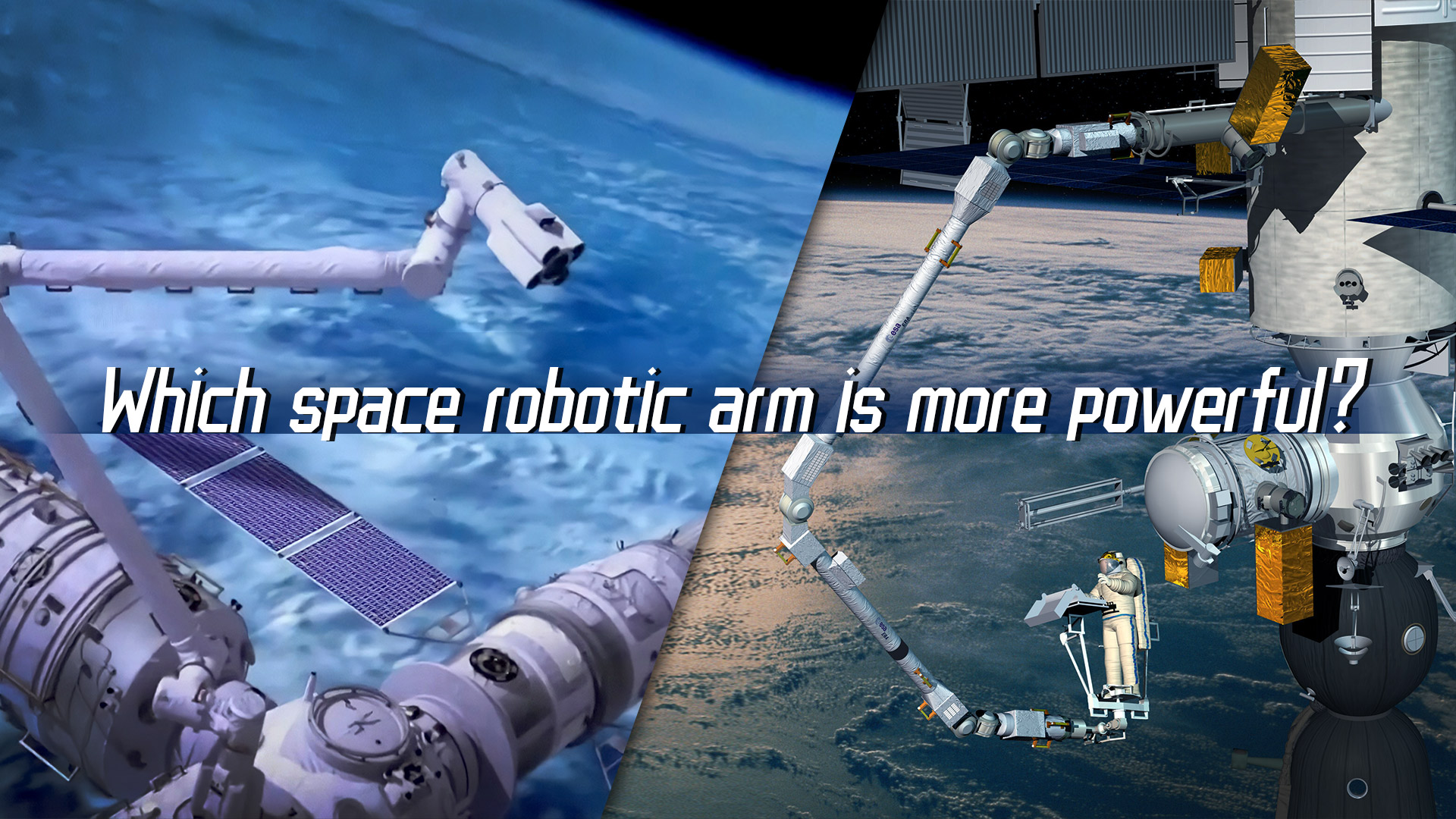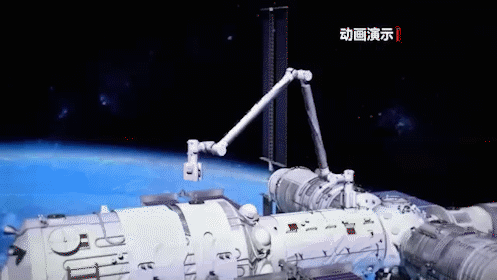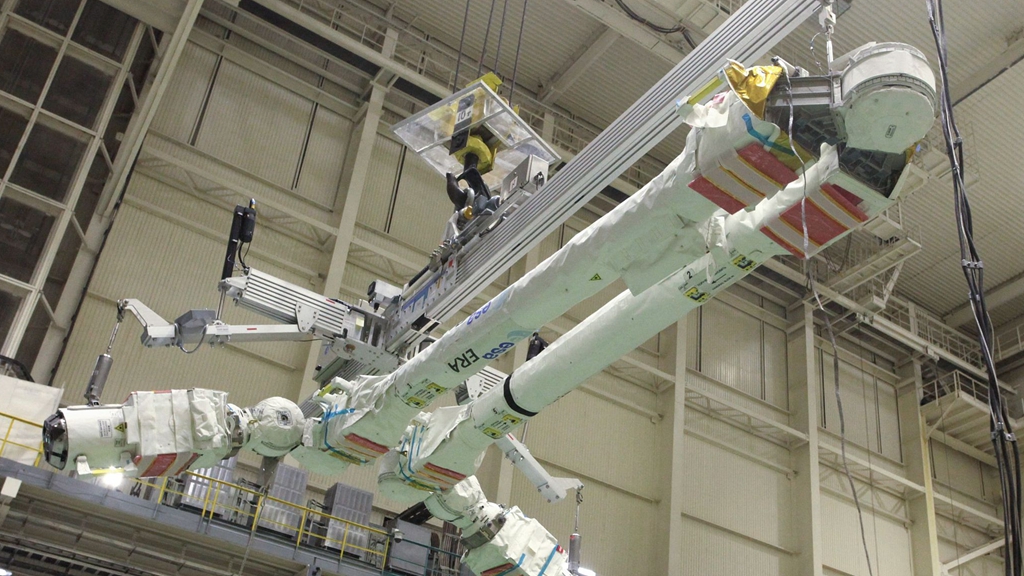03:16

The applications of robotic arms in outer space are common these days. Russia recently launched a new module to the International Space Station (ISS), which includes a European Robotic Arm (ERA).
At the core module of China's space station, a robotic arm is also onboard to assist the Chinese astronauts, or taikonauts, during their extravehicular activities.
Which one is more powerful?
In terms of length, the ERA measures 11.3 meters. It could pass a football from a penalty spot to the goalkeeper when stretched.
Slightly shorter, the arm at the core module of China's space station measures 10.2 meters. However, it can combine with the mechanical arms installed on the lab modules, which will likely be launched next year. The combined arm will be able to reach a working diameter of 15 meters.

The robotic arm at the core module of China's space station measures 10.2 meters. /China Media Group
The robotic arm at the core module of China's space station measures 10.2 meters. /China Media Group
Both arms are highly flexible with seven degrees of freedom, meaning they each have seven joints. With all the joints, China's robotic arm can reach and fetch objects up to 25 tonnes from every angle and any location at the space station, while the ERA is able to manipulate payloads of up to 8 tonnes.
When it comes to precision, the ERA is in the lead – its tip positioning accuracy is 5 millimeters, while China's robotic arm has a tip positioning accuracy of 45 millimeters.
Besides assisting taikonauts in extravehicular activities, such as the assembly, construction and repair of the space station, China's robotic arm is also tasked to ensure the safe and reliable operation of the space station in orbit.

The European Robotic Arm measures 11.3 meters. /CFP
The European Robotic Arm measures 11.3 meters. /CFP
The ERA has similar missions, including transfer and installation of payloads, inspection of the space station with the use of cameras, and support for astronauts during space walks.
Besides the two recently launched ones, other major robotic arms include the 17.6-meter Space Station Remote Manipulator System built by Canada and the 10-meter Japanese Experiment Module Remote Manipulator System. Both are on board the ISS.
A mature technology in space
As a mature technology, robotic arms have been used by many countries on spacecraft other than space stations.
For example, in response to the call to clean up space junk, China has launched several satellites with robotic arms. One great example is the Aolong-1, or Roaming Dragon, launched in 2016.
Designated as a space junk clean-up satellite, Aolong-1 can grab space debris with a small robotic arm and launch them toward the atmosphere to burn them up.
Space mechanical arms can ensure the safety of astronauts and efficiency of space exploration. With applications from different countries, we can unveil more mysteries of the universe.
On-camera reporter: Guo Meiping
Cameraman: Hu Hanpeng
Video editor: Wang Zengzheng
Cover image: Yu Peng

